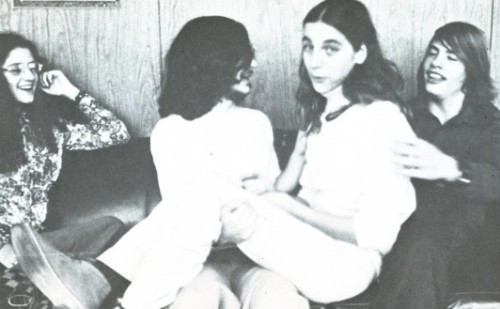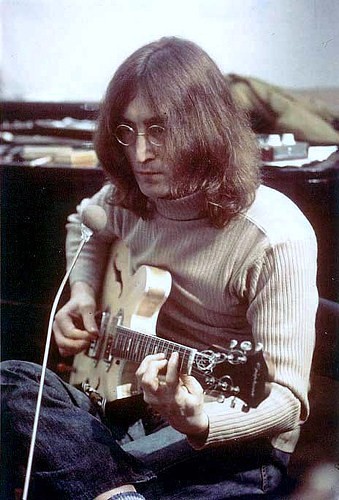
Miley's #127, up from #279 in 2007... Cyrus #512... Hannah #17... Montana #943
Emma’s up. Hannah’s down. When it comes to naming babies, there’s always a tussle between trad and fad.
To what degree are new parents guided by tradition, and to what degree by the creative impulse? How powerfully are people pulled along by the wave? How many are even aware that they’re riding a baby-naming trend?
The release last week by the Social Security Administration of the top baby names of 2008 is a reminder that every name is also a time capsule.
This year’s top boy’s name, Jacob, has held that spot since 1999. Top girl Emma replaced Emily, which had been No. 1 since 1996. (The Top 10 list is below.)
The reasons for the ebb and flow of popularity are complex. In the United States, we’re witnessing the ascent of Delilah and the descent — perhaps even the demise — of Gary. There’s even a trend toward the name Cohen, for the last 3,000 years the marker of Judaism’s priestly class, but in 2008 the 356th most popular boys’ first name in the United States.
Celebrity influence is the easiest to trace in baby naming fads. But the deeper trends are fascinating. Two researchers found that the slower a name gains popularity, the longer it is likely to retain popularity, and the greater impact it has (Charlene vs. Kristi, in their study).
Another trend: There appears to be a general decline of consonant names like Brad and Toni in favor of vowel names like Ethan and Olivia. Wired looked at the psychology and sociology behind baby naming. It concluded there are forces that bring even those who are looking for a unique name back toward the center.
“People may think they named a child after great, great grandma Olivia, but they have a lot of great, great grandmas, and they picked Olivia because it fits the popular sounds,” the article quotes Laura Wattenberg,who built The Baby Name Wizard.
And yet most new parents resist the pull to the most popular names, which today claim a smaller percentage of babies than in previous decades. “In the 1950s, the top 10 names for boys and girls accounted for a quarter of all babies. Today, it’s less than a tenth,” Wattenberg writes.
But since few can resist a Top 10 list, here goes. The top 10 baby names of 2008 are:
Boys:
1. Jacob—Hebrew: “supplanter”
2. Michael—Hebrew: “who is like God”
3. Ethan—Hebrew: “strong, firm”
4. Joshua—Hebrew: “the Lord is salvation”
5. Daniel—Hebrew: “God is my judge”
6. Alexander—Greek: “defending warrior”
7. Anthony—Latin: “priceless one” “priceless”
8. William—English from German: “resolute protection”
9. Christopher—Greek and Latin: “one who carries Christ”
10. Matthew—Hebrew: “gift of God”
Girls:
1. Emma—German: “healer of the universe”
2. Isabella—the Spanish and Italian variation of the Hebrew Elizabeth, which means “pledged to God”
3. Emily—Latin: “energetic”
4. Madison—English: “son of the mighty warrior”
5. Ava—Latin: “like a bird”
6. Olivia—Latin: “olive tree”
7. Sophia—Greek: “wisdom”
8. Abigail—Hebrew: “my father is joyful”
9. Elizabeth—Hebrew: “pledged to God”
10. Chloe—Greek: “young Greek shoot”
You may be wondering what folks in, say, Iceland, are naming their children. As of 2007, and providing this source is correct, here’s the answer:
Boys:
1. Jón
2. Daníel
3. Aron
4. Viktor
5. Alexander
Girls:
1. Sara
2. Anna
3. Emilía
4. Katrín
5. Eva
France? You got it.
Boys:
1. Enzo
2. Mathis
3. Lucas
4. Hugo
5. Matheo
Girls:
1. Emma
2. Lea
3. Manon
4. Clara
5. Chloe
And how about Brazil?
Boys:
1. João
2. Pedro
3. Gabriel
4. Lucas
5. Matheus
Girls:
1.Maria
2. Ana
3. Julia
4. Yasmin
5. Vitória
Where does your name (and your kids’ names) place? I checked, and David was No. 2 the year I was born, and was a respectable No. 14 in 2008.
(I’ve written more about baby names here and here.)











 I’ve heard the story before. I know how it ends. Yet something — curiosity, desire to learn, duty — drew me to the recent biography of John Lennon, John Lennon, by Philip Norman.
I’ve heard the story before. I know how it ends. Yet something — curiosity, desire to learn, duty — drew me to the recent biography of John Lennon, John Lennon, by Philip Norman.









